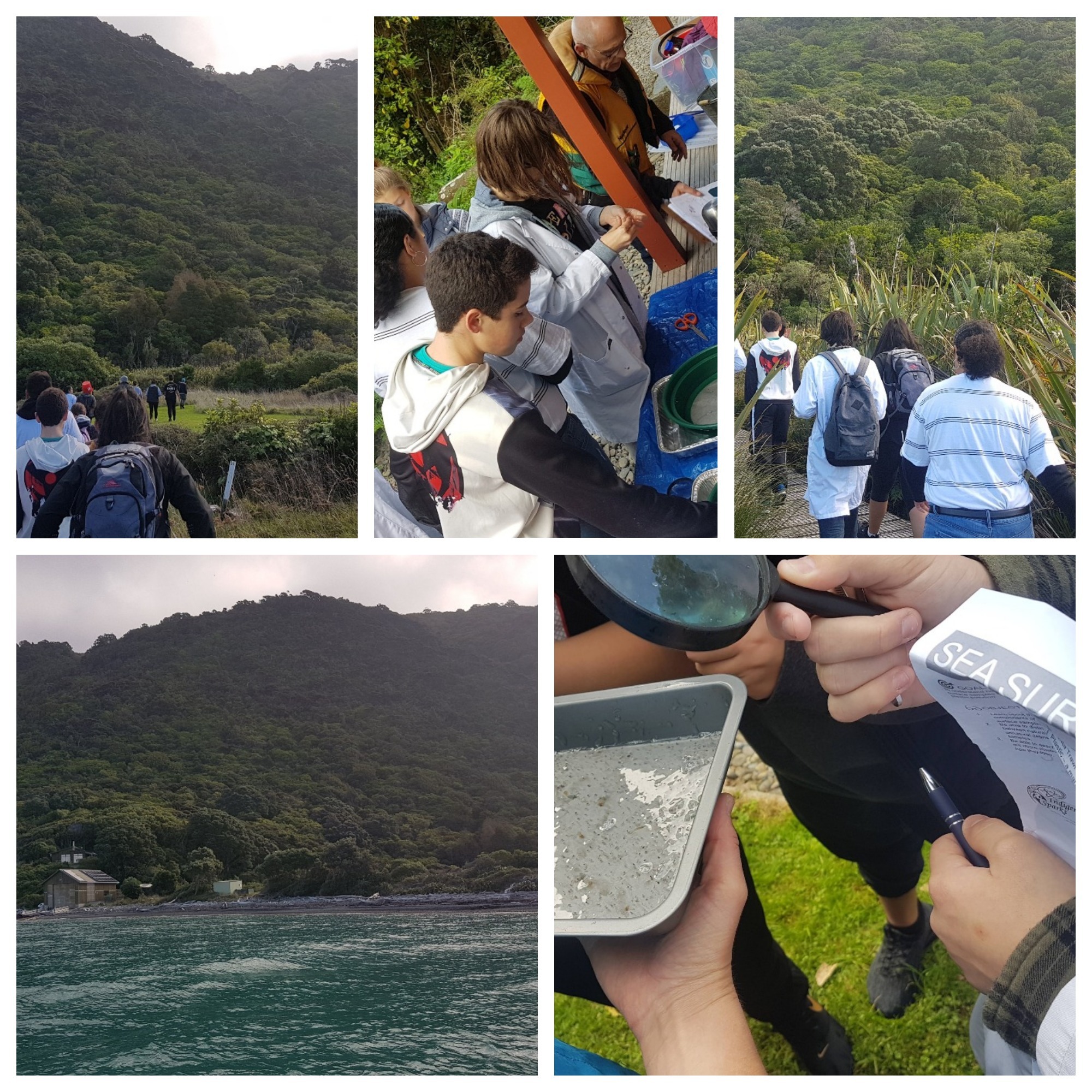Microplastics Brown's Bay and Kapiti coast
PTC organised the unique opportunity for Manawatu and Lower Hutt rangatahi to conduct trawling around Brown’s Bay and Kapiti Island. In collaboration with Raquelle from Algalita South Pacific, PTC hoped to inspire and educate our youth on the significance of microplastics in our oceans.
Our youth were keen to set sail as many had never had the opportunity to step foot on Kapiti island - one of New Zealand’s most significant nature reserves. Local skipper Glen from Kapiti Island Eco experience guided our group on the journey. Students were excited to learn to use a mantra trawl. The Mantra Trawl is 1.5 meters wide, made of aluminium with a 3 meters long, fine-mesh net; the mouth of the trawl is 60 centimetres wide, with two 45 centimetre floating wings on either side.
As students spent time trawling between Paraparaumu Beach to Brown Bay, they learnt of the harmful effects plastic waste can have on our native birds, i.e., ākā, tīeke/ saddleback, hihi/stitchbird, and kōkako living in the forest of Kapiti island. On Brown’s bay rangatahi collected macroplastics that had washed up on the shores. National Geographic, May 2019 reports ‘plastic waste, mostly from rivers or careless dumping on land, washes into the oceans at an average rate of about nine million tons a year, according to a 2015 study by Jenna Jambeck of the University of Georgia…Sunlight, wind, and waves eventually break down these ocean plastic to bits that are barely visible’.
On Kapiti island, our local guide Dave shared some of the history of this island with our group. Students learnt that it was near extinct in the 1800s due to deforestation, felling of forest trees and presence of devastating predators. In 1897 the island was recognised as a bird sanctuary that is now managed through Department of Conservation with Ngati Toa Rangitira serving as Tangata Whenua and Kiatiakitanga of the island. Today, the island has become a thriving sanctuary for our native birds: Kakariki, Kereru, hihi Korimako the fat pigeon, Piwakawaka and many others.
Whilst rangatahi gained first hand experience of new tools and methods; they equally left with new understanding of the Ministry of Environment’s decision to phase out single-use plastic shopping bags under 70 microns in thickness on 1 July 2019. These regulations apply to plastic shopping bags which meet all of the following criteria:
Made of any type of plastic less than 70 microns in thickness. This includes plastics made from bio-based materials such as starch and plastics designed to be degradable, biodegradable or oxo-degradable
Have carry handles including die-cut handles
Are new or unused
Results from sorting and categorisng plastics
Rangatahi also observed phytoplankton salp and small crustaceans copopeds in their sea samples.










